Types of end edges for furniture
When making furniture from laminated chipboard (Laminated chipboard) the edges of parts without processing have an unsightly appearance. To put them in order, a furniture edge and profile are used. It is more convenient to work with them on special equipment, but you can also achieve good results with your own hands at home.
The content of the article
Types of furniture edges
One of the most popular materials for making furniture is laminated chipboard. Its disadvantage is the ugly edges that remain when the part is cut. These edges are masked by the furniture edge. They make it from different materials, respectively, it has different properties and prices.
Edging paper or melamine
The cheapest option is melamine-impregnated paper edging. The paper is taken with a higher density, impregnated with melamine to increase strength and glued onto papyrus paper. Papyrus can be single-layer (cheaper) and double-layer. To prevent the melamine coating from being erased, everything is covered with a layer of varnish. To make it more convenient to cut the parts, an adhesive is applied to the reverse side of the melamine furniture edge. When working, you only need to slightly warm this composition and press it well to the end.
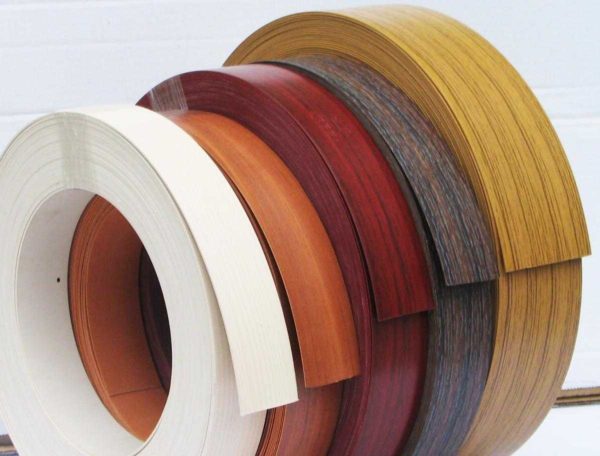
Paper or melamine edging is the cheapest, but also the most short-lived option for finishing furniture ends
The thickness of paper edging tapes is small - 0.2 mm and 0.4 mm are the most common. There is no thicker sense to do, and it will be expensive.
This type of edge differs in that it bends very well, does not break when bent. But its mechanical strength is very low - the edge wears out quickly. Therefore, if it is used, then only on those surfaces that are not subjected to stress. For example, on the back of shelves, countertops, etc.
PVC
Polyvinyl chloride, which has recently become widespread, is also used in the production of furniture edges. From the mass painted in a certain color, a tape of a certain width and thickness is formed. Its front surface can be smooth monochromatic, or it can be textured - with imitation of wood fibers. The number of colors is large, so it's easy to find the right one.
PVC furniture edge is the most popular material used by both home craftsmen and professionals. This is due to the relatively low price and good performance properties:
- High mechanical resistance.
- Withstands exposure to chemicals (household chemicals, for example).
- Moisture-proof material protects the ends of the product from moisture.
- PVC is an elastic material that allows you to handle curved surfaces.
- It is well processed with simple tools, which allows you to get a good result even at home.
PVC furniture edge is available in different thicknesses and widths. Thickness - from 0.4 mm to 4 mm, width from 19 mm to 54 mm. The thickness is chosen depending on the expected mechanical load or external appearance, and the width is slightly larger (at least 2-3 mm) than the thickness of the workpiece. There is PVC furniture edge with applied adhesive, there is - without. Both can be glued at home (more on that below).
This type of edging material also has disadvantages: not a very wide temperature regime: from -5 ° C to + 45 ° C. For this reason, furniture on the street in winter cannot be left, and also when pasting with heating, one must be careful so as not to melt the polymer.
Made of ABS (ABS) plastic
This polymer does not contain heavy metals and is highly durable and durable. The disadvantage can be considered a high price, therefore it is used extremely rarely, although it has excellent properties:
- Resistant to high and low temperatures, therefore, when gluing, you can use glue with any melting point. Small shrinkage on heating - about 0.3%.
- High mechanical resistance.
This type of edging can be matte, glossy, semi-glossy. There are also options that imitate different types of wood. In general, this material is more convenient to work with and more durable in use.
Veneer edging
Veneer is a thin cut of wood, dyed and molded into a ribbon. This furniture edge is used in production for pasting veneer sections. Working with this material requires certain skills, and the material is expensive.
Acrylic edging or 3D
Made from clear acrylic. A drawing is applied on the reverse side of the strip. The polymer layer on top gives it bulk, which is why it is called a 3D edge. It is used in the manufacture of furniture in an unusual design.
Furniture edge profiles
You can trim the edge of furniture not only with edge tape. There are also furniture profiles that are mechanically attached. They have two sections - T-shaped or U-shaped (also called C-shaped).
A groove is milled for the T-shaped furniture profiles in the processed edge. A profile is hammered into it with a furniture (rubber) mallet. The edges are trimmed at 45 ° to make the corner look attractive. It is brought to an ideal state with fine sandpaper. This type of profile is produced from PVC and aluminum, with the same installation method they look very different, and the differences are significant.
In width, they are under laminated chipboard 16 mm and 18 mm. There are wide ones, but they are much less common, since they work less with such material.
C- or U-shaped profiles are most often mounted on glue. They coat the edge with it, then put on a plastic profile, press it well and fix it. These PVC profiles can be soft or hard. Hard ones are worse to bend and it is difficult to paste over curved edges with them. But they have great strength.
If, nevertheless, it is required to "plant" a rigid C-shaped furniture profile on a bend, it is warmed up with a construction hairdryer, then given the desired shape and fixed with masking tape until the glue dries.
We glue the furniture edge with our own hands
There are two technologies for gluing furniture edging tape. The first is for those who have glue on the back. In this case, an iron or a hair dryer is needed. The second is for gluing tapes without glue. In this case, you need a good universal glue that can glue plastics and wood products and a furniture roller, a piece of felt or a soft rag so that you can press the edging well against the cut.
A little about how thick the edge to glue on what parts. Those edges that are not visible, according to GOST, can not be glued at all, but basically they are trying to process them so that moisture is less absorbed into the chipboard, and also to reduce the evaporation of formaldehyde. Melamine tape or PVC 0.4 mm is glued to these edges. The edges of the drawers are also processed (not facades).
It is better to use PVC 2 mm for the front ends of the facade and drawers, and PVC 1 mm for the visible sections of the shelves. The color is chosen either to match the main surface or "in contrast".
How to glue edging with glue yourself
The adhesive is applied to the melamine edge, sometimes it is on PVC. If you chose PVC, it's easier to start with thin ones - they are easier to process, any melamine is glued simply.
We take an iron and a fluoroplastic nozzle on it. If there is no nozzle, a thick cotton fabric will do - so as not to overheat the tape, but to melt the glue. A construction hairdryer is also suitable for this purpose. We put the iron on about "two", while it heats up, cut off a piece of tape. Length - a couple of centimeters longer than the workpiece.
We apply the edge to the part, level it, smooth it out. There should be small pieces hanging from both sides. We take an iron and, through a nozzle or a rag, iron the edge, heating it until the glue melts. Warm up evenly over the entire surface. After the entire edge is glued, let it cool. Then we start processing the edges.
You can cut the edge with a knife, both with a sharp and a blunt side. Someone uses an ordinary metal ruler, someone is more comfortable with a stainless steel spatula.
So, we take the tool of your choice, cut off the hanging edges of the edge. They are cut close to the material. Then cut off the excess along the part. Melamine and thin plastic can be easily cut with a knife. If the PVC edge is thicker - 0.5-0.6 mm or more, difficulties may already arise. Such edges can machine with a hand router, if he is. This guarantees a good result in a short time. The processing will take longer if you use sandpaper, but the result may not be worse.
One important point: when gluing thin edges, the cut of the part should be even, without protrusions and depressions. The material is plastic, which is why all defects are visible. Therefore, you will first go through the cuts with sandpaper, then carefully dust, degrease. Only then can you glue.
Edging with PVC tape (without glue on the back side)
With this method of self-gluing PVC edges, you need a universal glue and a piece of felt or rag. We read the instructions for the glue, we carry out all the actions according to the recommendation. For example, for the Moment glue, it is necessary to apply and distribute the composition to the surface, wait 15 minutes, and firmly press the glued surfaces.
Apply glue and wait - no problem. To tightly press the edge to the cut, you can use a wooden block wrapped in felt. Instead of a bar, you can take a construction float, and fasten felt on its sole. As a last resort, you can roll up the dense fabric in several layers and thus press the tape to the surface.
The selected tool is pressed against the laid edge, pressed with all weight, pressing it against the surface of the chipboard. At the same time, the movements are stroking. So iron the entire edge, achieving a very snug fit. The part is left in this form for some time - so that the glue "seizes". Then you can start processing the edge.

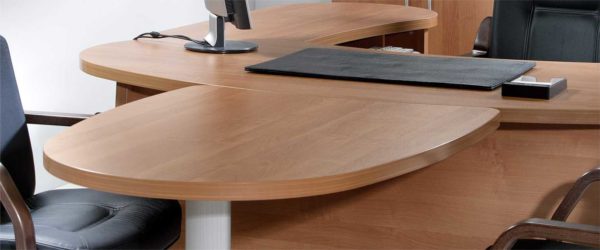
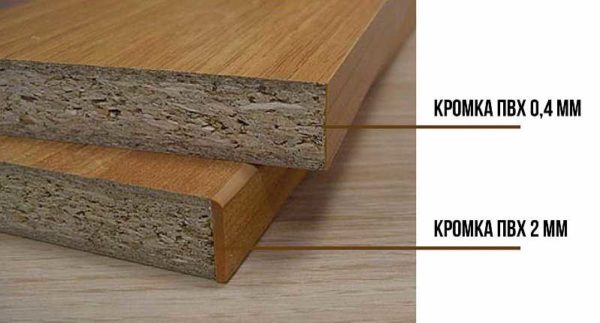
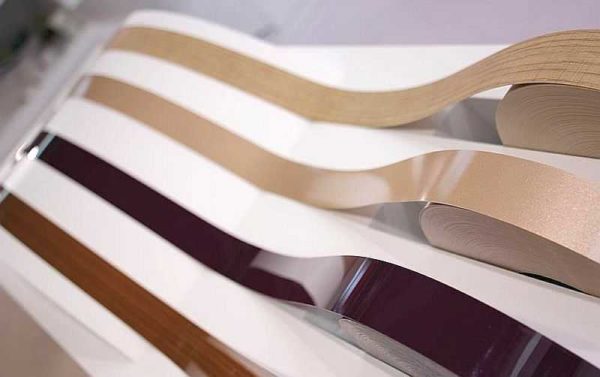
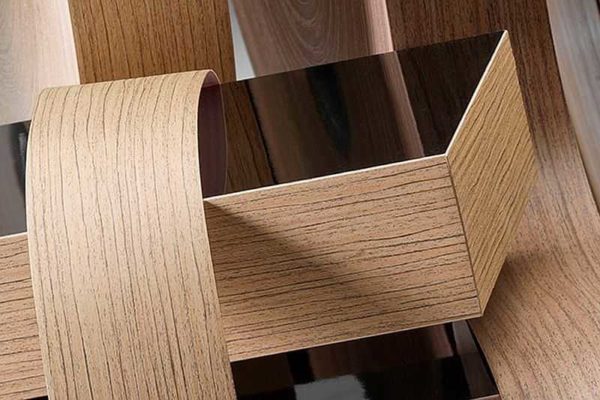
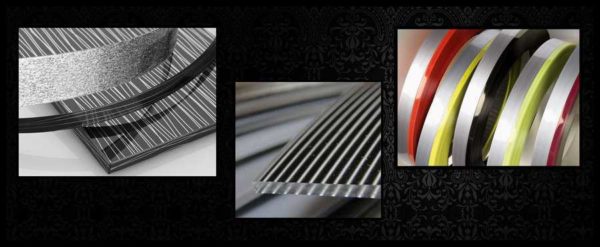
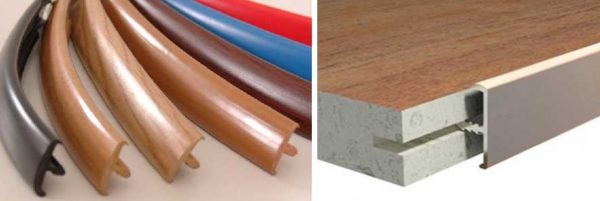

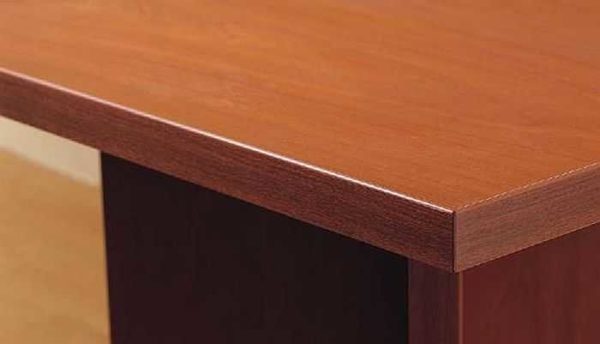
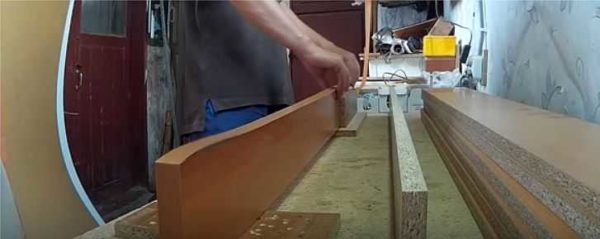
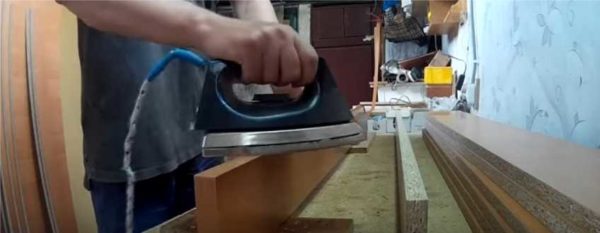


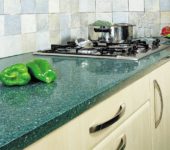
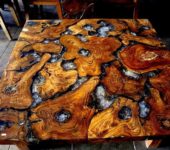

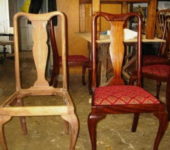






Hello, tell me, is a fluoroplastic sole the same as a Teflon one? Thank you.
Not too, but Teflon will work too ..
Teflon and PTFE are the same material.
Thank you. Is it the same in those specifications? Or is the heating time needed less / more?
The heating time generally depends on the thickness of the pad. Teflon is an aluminum base with fluoroplastic spraying ... In general, the modes are selected "on the spot", since the irons are also different. Try to glue on the scraps a couple of times ...
OK thank you very much!
Teflon is fluoroplastic, and aluminum is aluminum, it cannot be copper, nickel, fur, woolen or feldepers, or any other
And, I forgot one more thing, they told me in the store that the edge with glue for the machine is sold and its type cannot be glued at home, are there any varieties? Or do you glue this on the video? Thank you.
Why is it impossible?
Where in Moscow can you buy pvc edging with applied glue?